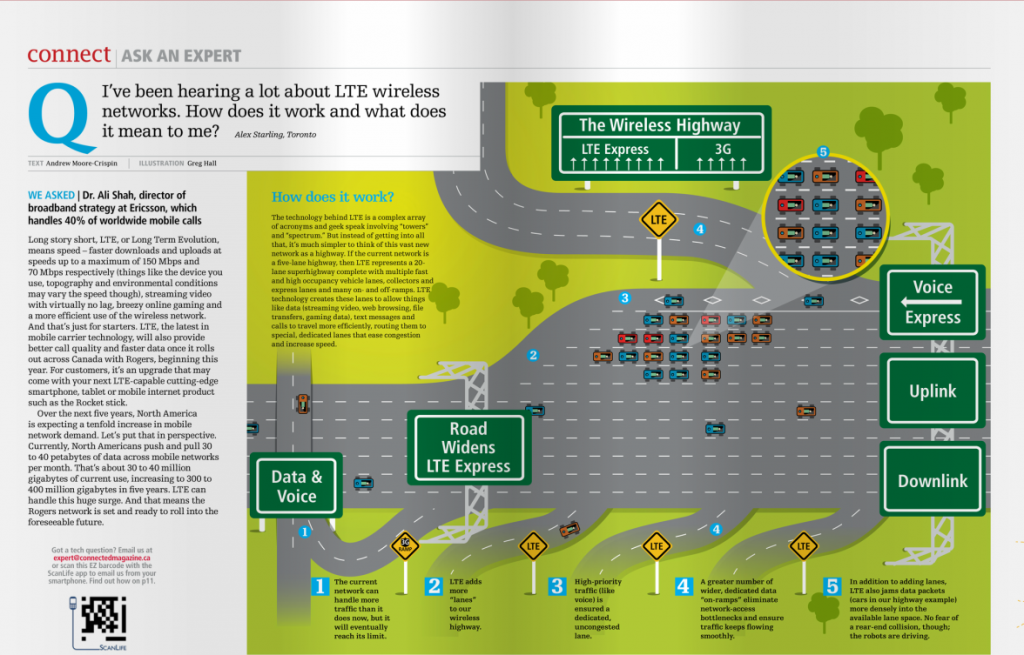While usually we find a lot of dumbed down explanations terrible, we actually found that this recent article posted in the Connected Magazine by Rogers is actually a good way of trying to describe LTE (long term evolution) to the general public without needing to know a lot of the information that goes back behind wireless networks.
Here’s a quick summary of the main points (they’ve used a highway and cars reference to make things more understandable)
- LTE is the next logical step for wireless technologies to take, it can theoretically reach download speeds of 150Mbps and upload speeds of 70Mbps depending on devices, geography and network availability
- this means, streaming HD video with no lag or wait time, beautiful online gaming, and the best wireless experience possible
- it will provide better call quality and data transfer speeds
- over next 5 years North America is expected to tenfold increase in mobile network demand
- currently NA push and pull 30 to 40 petabytes of data across networks EACH month, thats like 30-40 million gigabytes of current use changing to 300 million to 400 million gigabytes of use in five years!!! (LTE can handle that surge)
That’s the basics of it essentially. Here’s where the article shines, it’s highway annalogy.
- Imagine the current network is a 5 lane highway, LTE will increase that highway to 20 lanes!
- This new highway has specific lanes for data (streaming video, gaming), text messaging, and calls which means everything will be pushed to the “correct” lane making everything more organized and faster
This means in simple terms 4 things:
- LTE will handle more network congestion with ease (once this network has capped out)
- High priority information like voice calls will get priority with their own “lanes” meaning better quality of sound and speed (and more calls can be handled)
- More “lanes” mean more channels are open for data traffic so things like browsing, downloading and gaming can be performed much quicker and easier
- LTE packages all these different things more closely together (imagine 5 cars fitting side by side in ONE lane) without any chance of collisions (as it’s all handled electronically)
All in all this promises a greater wireless experience for the end user!
In addition to all this, we’ve talked to network developers about the matter and one huge benefit of LTE is the recievers are much SMALLER and more POWERFUL so instead of having hundreds of giant ugly mobile towers around our country, LTE towers can fit ONTOP of light posts making them barely visible!
With Bell and Rogers now fighting over who will launch LTE first, we’ll soon be able to see how this amazing new network will work! Rogers is currently poised to launch LTE in Ottawa this summer so stay tuned for more information soon!
Source: Connected
